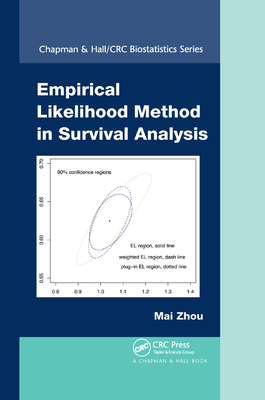Survival Analysis with Python
暫譯: 使用 Python 進行生存分析
Nag, Avishek
- 出版商: Auerbach Publication
- 出版日期: 2021-12-17
- 售價: $3,290
- 貴賓價: 9.5 折 $3,126
- 語言: 英文
- 頁數: 84
- 裝訂: Hardcover - also called cloth, retail trade, or trade
- ISBN: 1032148268
- ISBN-13: 9781032148267
-
相關分類:
Python
海外代購書籍(需單獨結帳)
相關主題
商品描述
Survival analysis uses statistics to calculate time to failure. Survival Analysis with Python takes a fresh look at this complex subject by explaining how to use the Python programming language to perform this type of analysis As the subject itself is very mathematical and full of expressions and formulations, the book provides detailed explanations and examines practical implications. The book begins with an overview of the concepts underpinning statistical survival analysis. It then delves into
- Parametric models with coverage of
- Concept of maximum likelihood estimate (MLE) of a probability distribution parameter
- MLE of the survival function
- Common probability distributions and their analysis
- Analysis of exponential distribution as a survival function
- Analysis of Weibull distribution as a survival function
- Derivation of Gumbel distribution as a survival function from Weibull
- Non-parametric models including
- Kaplan-Meier (KM) estimator, a derivation of expression using MLE
- Fitting KM estimator with an example dataset, Python code and plotting curves
- Greenwood's formulae and its derivation
- Models with covariates explaining
- The concept of time shift and the accelerated failure time (AFT) model
- Weibull-AFT model and derivation of parameters by MLE
- Proportional Hazard (PH) model
- Cox-PH model & Breslow's method
- Significance of covariates
- Selection of covariates
The Python lifelines library is used for coding examples. Mapping theory to practical examples featuring datasets, this book is a hands-on tutorial as well as a handy reference.
商品描述(中文翻譯)
生存分析使用統計學來計算失敗的時間。使用 Python 的生存分析 以全新的視角探討這一複雜主題,解釋如何使用 Python 程式語言來執行這類分析。由於該主題本身非常數學化,充滿了表達式和公式,這本書提供了詳細的解釋並探討了實際應用。書籍首先概述了統計生存分析的基本概念,然後深入探討以下內容:
- 參數模型,包括
- 概率分佈參數的最大似然估計 (MLE) 概念
- 生存函數的 MLE
- 常見的概率分佈及其分析
- 指數分佈作為生存函數的分析
- 威布爾分佈作為生存函數的分析
- 從威布爾分佈推導的 Gumbel 分佈作為生存函數
- 非參數模型,包括
- Kaplan-Meier (KM) 估計量,使用 MLE 的表達式推導
- 使用示例數據集擬合 KM 估計量,Python 代碼及繪製曲線
- Greenwood 公式及其推導
- 包含協變量的模型,解釋
- 時間偏移的概念及加速失敗時間 (AFT) 模型
- 威布爾-AFT 模型及通過 MLE 推導參數
- 比例風險 (PH) 模型
- Cox-PH 模型及 Breslow 方法
- 協變量的重要性
- 協變量的選擇
本書使用 Python lifelines 函式庫作為編碼示例。將理論映射到包含數據集的實際示例,本書既是實用的教程,也是方便的參考資料。











